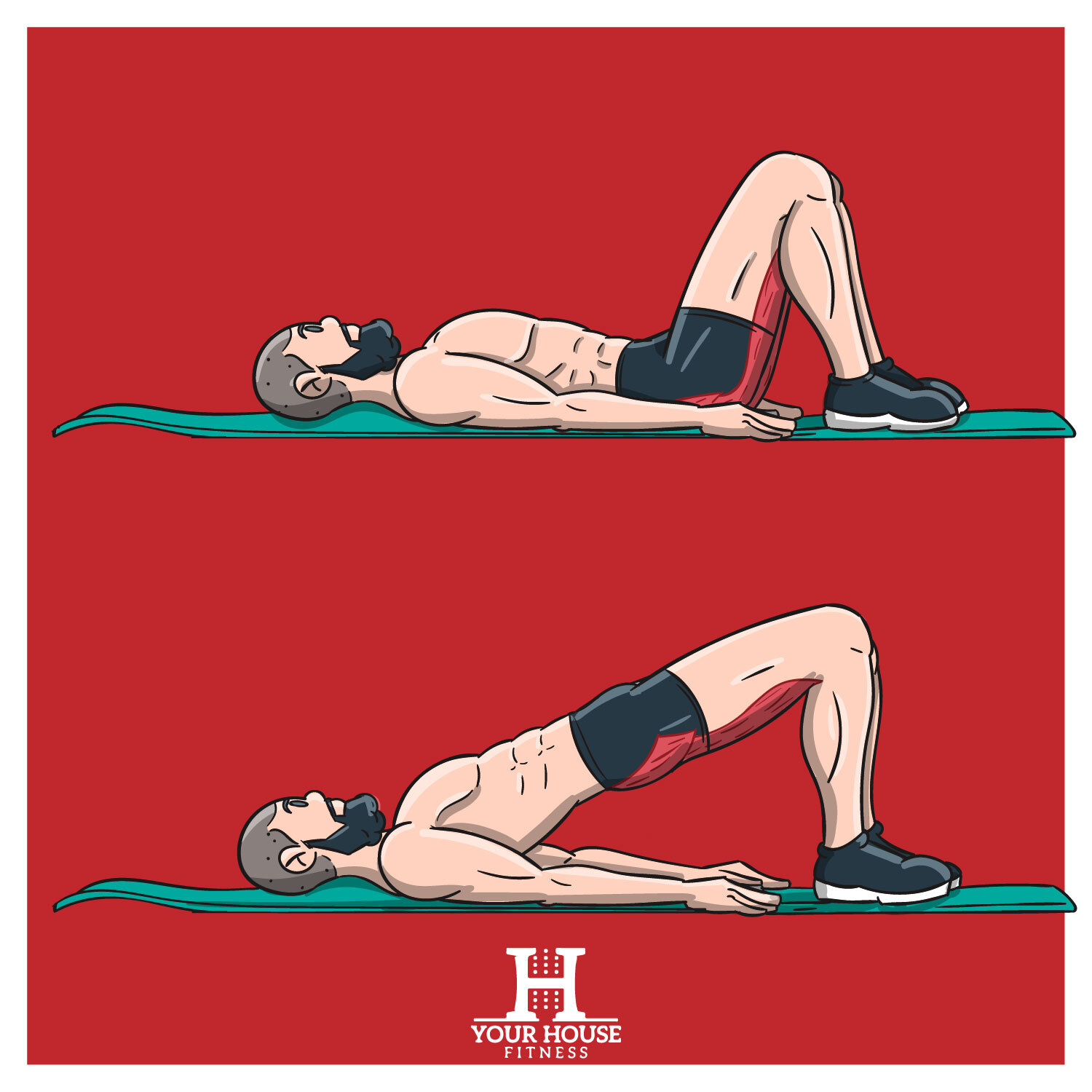Exercise Tutorial: Glute Bridge
Table of Contents
What Is the Glute Bridge
A Glute Bridge, also known as a hip bridge, is a simple and effective bodyweight exercise to help activate the glutes. It is useful if you are looking to strengthen the lower body, and also if you are looking to rehabilitate a hamstring injury.
How to Do a Glute Bridge
To perform a Glute Bridge, you should begin on a soft surface such as a yoga mat. Lie down on your back with your knees bent and feet flat on the floor. Rest your arms beside you with your palms on the floor as well. Drive your weight through your heels to elevate your hips off the floor. Squeeze your glutes at the top and slowly lower your hips back to the starting position.
Glute Bridge Benefits
The Glute Bridge has many benefits due to its multiple variations. With regular performance, the benefits of the Glute Bridge include:
Strengthens the core.
Can help improve posture.
Can help reduce knee pain.
Reduce low back pain.
Strengthens the glutes and hamstrings.
Improved squat and deadlift performance.
Glute Bridge Muscles Worked
Glute Bridge Mistakes
Common mistakes when performing a Glute Bridge include:
Hyperextending the low back (going too high)
Over-working the hamstrings
Performing the exercise too quickly
Rotating the hips or torso
There are cues you can use when performing the Glute Bridge to help avoid these mistakes including:
Driving through your heels
Looking at your knees to help prevent hyperextension
Squeezing the glute at the top of the bridge
Keep the hips in line with your knees
Glute Bridge Variations
Single-Leg Glute Bridge
Dumbbell Glute Bridge
Barbell Glute Bridge
Banded Glute Bridge
Frog Pump
Feet Elevated Glute Bridge
Single-Leg Glute Bridge
The Single Leg Glute Bridge is performed in the same manner as the conventional glute bridge, just with one leg extended in the air. Drive through the heel on the bent leg to elevate your hips off the ground while the other leg is extended in the air. Remember to keep your hips level to avoid any twisting!
Dumbbell Glute Bridge
The Dumbbell Glute Bridge is performed the same way as the conventional glute bridge. The only difference is now you are adding a load with the dumbbell. Place the dumbbell in the crease of your hips and perform the Glute Bridge as normal. Remember the squeeze the glutes at the top!
Barbell Glute Bridge
The Barbell Glute Bridge itself has different variations. You can perform this Glute Bridge in the same fashion as the Dumbbell Glute Bridge, with the Barbell resting in the crease of your hips.
Alternatively, you can use a Barbell Hip thrust machine, or you can use a bench to help you. If using a bench, only place your shoulder blades on the edge of the bench and then continue to perform the movement pattern with the barbell on your hips.
Banded Glute Bridge
A Banded Glute Bridge is performed the same way as the conventional Glute Bridge, except with a resistance band around your thighs. Slide the resistance band on before you enter the starting position and then continue to perform the movement pattern.
Check out the booty bands (glute bands) here.
Frog Pump
A frog pump is a variation of the glute bridge, primarily differing in foot position. Instead of planting the feet flat, you place the soles of your feet together. This variation increases glute activation due to external rotation and hip abduction.
Feet Elevated Glute Bridge
This variation of the glute bridge involves elevating your feet on a surface like a box or a bench. With your feet elevated, lift your hips fully while keeping your spine in a neutral position.
Which Glute Bridge Variation Is Right for You?
Different variations of the Glute Bridge exist to help you progress. As with any exercise, always start with the simple, bodyweight version first. Only when you have mastered the movement should you proceed to add load or progress.
For the Glute Bridge, begin with the conventional movement followed by the Single Leg Glute Bridge. Once you have mastered these variations, you can move onto the Banded Glute Bridge, and then Dumbbell and Barbell Glute Bridge. You can proceed to increase your load when you can perform 3 sets of 12 reps with 2 reps in reserve.
Glute Bridge Alternatives
FAQ on Glute Bridge
Lying Hip Raises
Lying Hip Raises is another term for a Glute Bridge.
Glute Raises
Glute Raises is another term that can mean multiple things. This can be a Glute Bridge, a Donkey Kick , Single-Leg Glute Bridge or any other exercise that involves elevation of the Glutes!
Hip Lifts
Similar to the Glute Raise, a Hip Lift is a term that can mean different things. Most often, a Hip Lift is associated with the Glute Bridge.
Hip Raises
Hip Raises can mean a few different things in the exercise world. Overall, the Hip Raise is just another term for a Glute Bridge. There are also side lying hip raises where you can support the body on one forearm and engage the core to elevate the hips to be in line with the shoulders, just as you would in a side plank.



